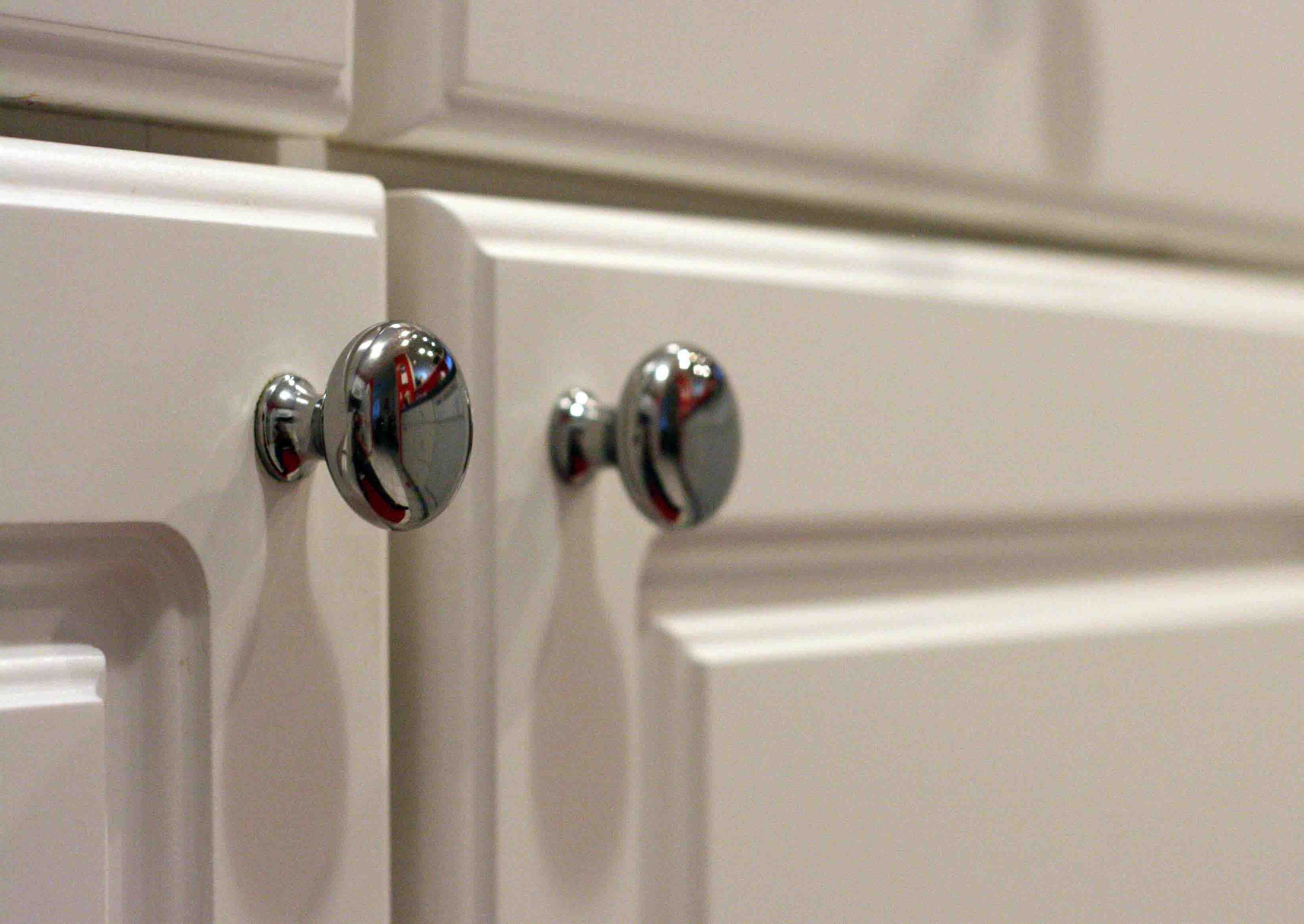Styles and Trends in Modern Cabinet Door Hardware

Modern cabinet hardware significantly impacts a kitchen or bathroom’s overall aesthetic. The right pulls and knobs can elevate a space, tying together design elements and adding a touch of personality. Choosing the perfect hardware involves considering current trends and how they align with your chosen interior design style.
Popular Modern Cabinet Hardware Styles
The selection of cabinet hardware is heavily influenced by the desired overall style of the room. Three popular modern styles offer diverse options to suit different tastes. The following table compares minimalist, industrial, and transitional styles.
| Style | Material | Finish | Aesthetic |
|---|---|---|---|
| Minimalist | Brushed stainless steel, matte black metal, solid wood | Matte black, brushed nickel, satin brass | Clean lines, simple shapes, understated elegance |
| Industrial | Cast iron, wrought iron, aged brass | Dark bronze, oil-rubbed bronze, matte black | Raw, textured surfaces, bold shapes, vintage-inspired |
| Transitional | Nickel, brass, wood | Satin nickel, polished brass, antique brass | Blends modern and traditional elements, sophisticated and versatile |
Emerging Trends in Modern Cabinet Hardware
Several key trends are shaping the modern cabinet hardware landscape. These trends reflect evolving design preferences and a focus on functionality and unique visual appeal.
Modern cabinet door hardware – Five notable trends include:
- Statement Hardware: This trend features oversized knobs and pulls that make a bold visual statement. Think substantial, sculptural pieces in unexpected materials like ceramic or resin, adding a touch of artistic flair.
- Integrated Handles: Sleek, integrated handles are gaining popularity, offering a seamless, minimalist look. These handles are often recessed into the cabinet door, creating a clean, uncluttered appearance.
- Mixed Metals: Combining different metal finishes on cabinet hardware is a popular way to add visual interest and depth. For example, pairing matte black pulls with brushed gold accents creates a sophisticated contrast.
- Geometric Shapes: Cabinet hardware with geometric shapes, such as hexagons, squares, and triangles, offers a modern and graphic touch. These shapes add a contemporary feel, especially when paired with minimalist cabinet designs.
- Sustainable Materials: Consumers are increasingly seeking sustainable and ethically sourced materials. This trend involves using reclaimed wood, recycled metals, and other eco-friendly options for cabinet hardware, reflecting a growing awareness of environmental impact.
Influence of Interior Design Styles on Cabinet Hardware Selection
The selection of cabinet hardware is intrinsically linked to the overall interior design style. Different styles dictate specific aesthetic preferences, impacting the choice of materials, finishes, and shapes.
Here’s how some popular interior design styles influence hardware choices:
- Mid-Century Modern: This style favors clean lines, tapered legs, and simple shapes. Cabinet hardware typically features sleek, minimalist pulls in brushed brass or chrome finishes.
- Farmhouse: Farmhouse style emphasizes rustic charm and warmth. Cabinet hardware often incorporates aged brass or bronze finishes, sometimes with distressed or antiqued textures, adding a touch of vintage appeal.
- Scandinavian: Scandinavian design prioritizes functionality, simplicity, and natural materials. Cabinet hardware tends to be minimalist, often featuring light wood knobs or simple, brushed metal pulls in matte finishes.
Selecting and Installing Modern Cabinet Hardware
/Modern-Kitchen-with-Slab-Cabinet-Doors-533766531-56a4a0fb3df78cf77283525c.jpg)
Choosing the right cabinet hardware can dramatically elevate the look and feel of your kitchen or bathroom. This process involves careful measurement, style selection, and precise installation. Getting it right ensures both functionality and aesthetic appeal.
Measuring and Selecting Cabinet Hardware
Accurate measurements are crucial for selecting appropriately sized hardware. Incorrect sizing can lead to awkward placement and a less-than-perfect finished look. The following steps will guide you through this process.
- Measure Cabinet Door and Drawer Fronts: Use a tape measure to determine the width of your cabinet doors and drawer fronts. Record these measurements for each cabinet. Consider the center-to-center distance for pull placement.
- Determine Hardware Type and Size: Based on your measurements, select appropriate hardware. For example, larger doors or drawers may require longer pulls or multiple knobs. Small cabinets might suit smaller knobs or pulls.
- Consider Cabinet Style and Design: The style of your cabinet hardware should complement your overall kitchen or bathroom design. Modern cabinets often pair well with sleek, minimalist hardware, while traditional styles might call for more ornate options.
- Choose Material and Finish: Select a material and finish that are durable and aesthetically pleasing. Popular choices include brushed nickel, stainless steel, matte black, and polished chrome.
- Review Manufacturer Specifications: Always check the manufacturer’s specifications for recommended spacing and installation instructions. This will ensure a professional-looking finish.
Visual Representation of Proper Cabinet Hardware Placement, Modern cabinet door hardware
Imagine a kitchen with five identical upper cabinets. Each cabinet door is 30 inches wide. The image depicts three evenly spaced knobs on each door, positioned 10 inches apart, center-to-center. The knobs are uniformly aligned horizontally across all five doors, creating a visually appealing and balanced look. The knobs themselves are simple, brushed nickel pulls, about 3 inches long, perfectly complementing the clean lines of the modern shaker-style cabinets. The consistent spacing and alignment create a sense of order and sophistication. This visualization demonstrates the importance of precise measurement and planning in achieving a professional-looking result.
Installing Various Types of Cabinet Hardware
Successful installation depends on the type of hardware. Here’s a guide for common types:
Knobs
- Challenge: Accurate hole placement is essential for a clean look. Incorrect placement can be difficult to correct.
- Solution: Use a template or carefully mark the hole location before drilling. Pre-drilling pilot holes will prevent wood splitting.
Pulls
- Challenge: Ensuring consistent spacing between pulls on multiple cabinets can be challenging.
- Solution: Use a measuring tape and level to ensure accurate placement. A template or jig can aid in consistent spacing across multiple cabinets.
Handles
- Challenge: Handles often require longer screws, which may necessitate pre-drilling larger pilot holes to prevent stripping the wood.
- Solution: Use a drill bit that matches the screw diameter. Always pre-drill pilot holes, especially in harder woods.
